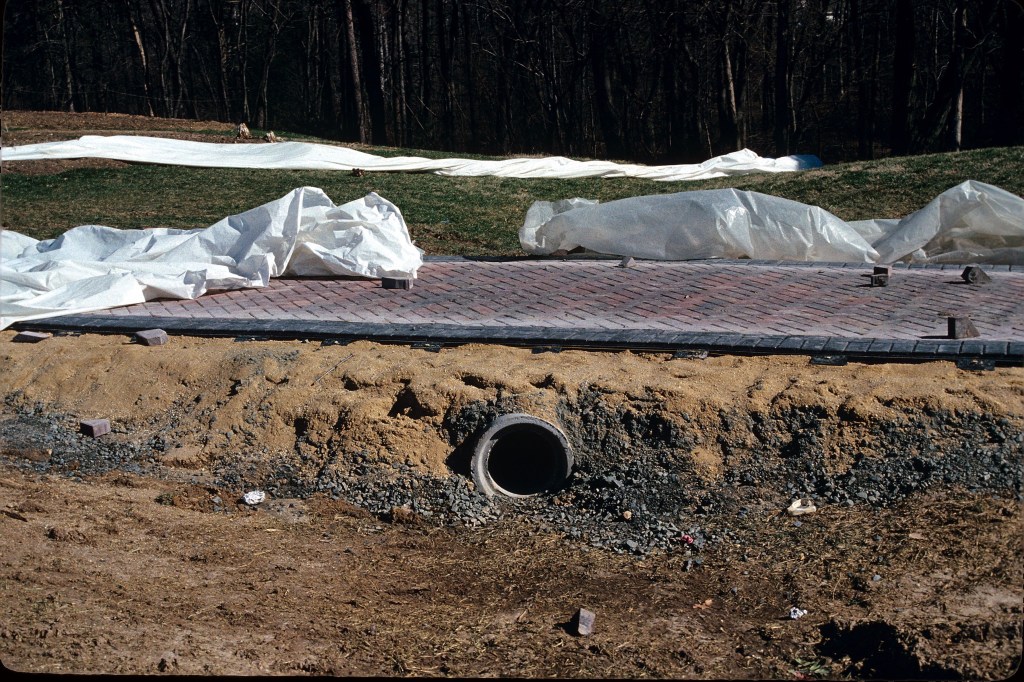
Green Spring Gardens has more than 20 demonstration gardens designed for public enjoyment and learning. My personal favorite is the Swale Garden, which is located between the site’s central lawn and the Horticulture Center. I love it because it is a hard-working garden that does its job while still looking beautiful.
The purpose of a swale is to collect rain and runoff water and then allow those waters to slowly percolate into the ground or be funneled elsewhere. A hard rain at Green Spring creates a tremendous amount of runoff from the Horticulture Center, the parking lot, and the lawn. The park’s dry creek bed becomes a rushing river that runs through large drainage pipes, under a sidewalk, and down into Turkeycock Run — the creek that runs through Green Spring — and into the site’s ponds.
The process protects the area from flooding while filtering and cooling the water. This prevents polluted or over-heated runoff from entering and harming our rivers and streams, which makes swales an extremely helpful and environmentally responsible solution to water problems.

Before and after images of Green Spring’s Swale Garden.
There are ugly swales and beautiful ones. You have probably seen ugly ones in shopping center parking lots and along highways — big drainage ditches with no vegetation around or in them. At Green Spring Gardens, we choose to be beautiful all year long. As you walk along our Swale Garden, you might think that it formed naturally since it seems to blend with surrounding areas and gardens. Rather, it was specially engineered and built in 1996 to flush water away from a low spot around the Horticulture Center.
In and around the Swale Garden, we have planted mostly native plants that don’t need much fussing over and that can tolerate our dry, hot summers as well as wet feet. The upper area of the swale displays mostly drought-loving shrubs, such as sweet bay magnolia, weigelas, ninebarks, Japanese sedge grass, and spireas.
Around and along the edges of the swale, you will find flowering perennials, such as coneflowers, rudbeckia, delphinim, salvias, and spiderworts. These plants do a beautiful job of hiding the workings of the swale and softening its edges. The chaste (or vitex) tree, which blooms purple in summer, anchors the swale and disguises a sharp drop between the sidewalk and creek bed. A variety of plantings ensures that there is always something blooming or attractive, no matter the season.


Before and after images of Green Spring’s Swale Garden.
The lower parts of a swale should include hardy plants that don’t mind standing in water for a few hours, or even days, as the water drains. At Green Spring, we’ve planted things like summersweet, viburnum, lobelias, hydrangeas and sedges, all of which do well in dry and wet conditions and add beautiful texture and color.
If you are interested in making a working swale in your own yard or garden, I invite you to visit Green Spring Gardens to see how a swale works and what it could look like. Green Spring Extension Master Gardeners are available to share ideas and to provide answers to your gardening and design questions. To speak with a Master Gardener, visit our Help Desk web page, leave a voicemail at 703-324-8556, or email mgfairfax@vt.edu.
Author Barbara Leonard is a Green Spring Extension Master Gardener. Learn more about her favorite demonstration garden in the Swale Garden video.
For additional gardening information and resources:
- Visit the Green Spring Extension Master Gardener’s web page
- See Green Spring’s Gardening Resources page
- View recorded plant clinics
- Sign up for a Garden Talk

